| Page last updated
7 September 2005 |
What's New with the MUSSELp?
The highlights of 2004.
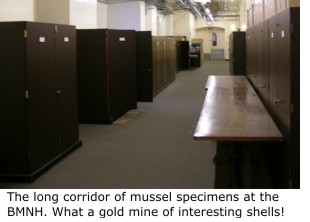 1-19 November 2004. — Collections Work at the Natural History Museum in London, UK. In November, KSC and DLG spent three weeks at the BMNH in London, England examining that collection's vast holdings of freshwater mussels, the longest collections visit to-date. It was hard work, but the additions to our MUSSELp database were tremendous: we examined over 1500 lots of freshwater mussels from all over the world and brought back just under 3.6 GB of digital images! We also had the opportunity to examine some of the specimens brought back from Central Africa by Ellinor Michel. 1-19 November 2004. — Collections Work at the Natural History Museum in London, UK. In November, KSC and DLG spent three weeks at the BMNH in London, England examining that collection's vast holdings of freshwater mussels, the longest collections visit to-date. It was hard work, but the additions to our MUSSELp database were tremendous: we examined over 1500 lots of freshwater mussels from all over the world and brought back just under 3.6 GB of digital images! We also had the opportunity to examine some of the specimens brought back from Central Africa by Ellinor Michel.
One of the exciting bits we gained from this particular collection was finding specimens collected by Richard Burton and John Hanning Speke during their various travels.
Click here to find out about the work that Dr. Michel and Diama Bukini Athuman did last summer in Lake Tanganyika and how the MUSSEL Project contributed to it.
Click here to see a few of the pictures we took while in London. |
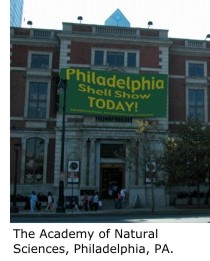 15 October 2004. — New Stuff for the MUSSELp and a Lot More of the Same. A lot of new stuff has been happening with the MUSSELp since KSC and DLG got back from the AFS meeting in Madison. 15 October 2004. — New Stuff for the MUSSELp and a Lot More of the Same. A lot of new stuff has been happening with the MUSSELp since KSC and DLG got back from the AFS meeting in Madison.
Tim Hayes, Research and Curatorial Assistant at the Academy of Natural Sciences, began working full-time on the MUSSEL Project. Since September 2003, Tim (MUSSELp codename, Jellybean) has been working on georeferencing the ANSP malacology collection. Click here to learn more about that project. In September, Tim traveled with DLG to the University of Michigan, Ann Arbor and the Carnegie Museum of Natural History in Pittsburgh to photograph more specimens, and he has been shooting African specimens at the Academy for inclusion in the MUSSELp database.
Over the last year, thousands of mussel specimens have been photographed — at ANSP, INHS, FMNS, CM, UMMZ and MCZ (see below), and Kevin Cummings (AKA Morris) has been working hard to render those images for the database and enter the associated information into the MUSSELp specimens database. This is hard and tedious work, but the reward will be an online, virtual museum of freshwater mussel specimens.
Dan Graf (AKA Jerome) has been working the outreach side of the MUSSELp. 2-3 October was the 2004 Philadelphia Shell Show at the ANSP, put on by the Philadelphia Shell Club. DLG gave a public lecture in the Academy's new auditorium entitled, "Freshwater Mollusks, a Little About the Biology of an Endangered Resource." Later that week, Dan presented the talk he gave in Perth as part of the ANSP seminar series (see below). The turn-out for the seminar was excellent due to the thirst of the Academy community for critical and scientific discussion of unionoid evolution. The reception that followed included a showing of an original film about working at the ANSP. |
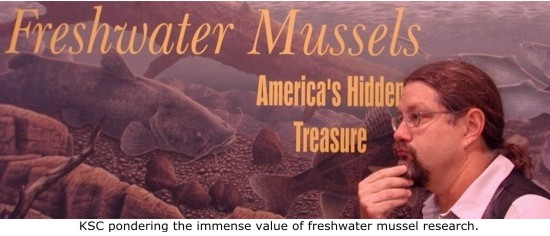
22-27 August 2004. — FMCS Symposium at the American Fisheries Society Meeting in Madison, Wisconsin and Collection Work at the Illinois Natural History Survey, Champaign, Illinois. For the annual meeting of the American Fisheries Society, the Freshwater Mollusk Conservation Society organized a symposium on various aspects of freshwater mussel biology and management. KSC served as the compere, gave an impromptu introductory lecture and presented the closing talk, "Resouces for Freshwater Malacology: Getting in the Game." DLG gave a presentation as well, "Evolution and Systematics of Nearctic Freshwater Mussels." The symposium went over very well, and hopefully the fisheries folk came away with a new respect for "America's hidden treasure."
The occasion of being in the Heartland facilitated some collections work as KSC's home institution, the Illinois Natural History Survey. DLG and KSC captured digital images of INHS specimens for the MUSSELp database.
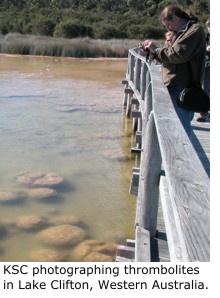 8-24 July 2004. — World Congress of Malacology in Perth and Collection Work in the Australian Museum, Sydney, Australia. DLG and KSC went to Australia to attend the World Congress of Malacology and work in the mollusk collection at the Australian Musem, Sydney, Australia. 8-24 July 2004. — World Congress of Malacology in Perth and Collection Work in the Australian Museum, Sydney, Australia. DLG and KSC went to Australia to attend the World Congress of Malacology and work in the mollusk collection at the Australian Musem, Sydney, Australia.
The World Congress of Macology was organized by the Western Australian Museum and held at the University of Western Australia in Perth. The MUSSELp was a prominent part of the Bivalve Phylogeny Symposium, and the lecture, "Palaeoheterodont Diversity: What We Know and What We Wish We Knew About Freshwater Mussel Evolution," went well (although long). It was pretty well established, based on the other presentations, that the Unionidae is the largest bivalve family, with well over 600 species.
The meeting was followed by a week of collections work at the Australian Museum in Sydney. We took hundreds of pictures of mostly Australasian hyriids for our database.
When not discharging our malacological duties, we took in the sights in Australia, such as the thrombolites in Lake Clifton. Click here to see more pictures. |
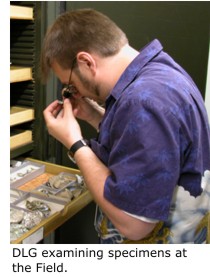 17-21 May 2004. — Collection Work at the FMNH: Our Collection of Digital Images Grows. DLG and KSC spent the week at the Field Museum of Natural History in Chicago, Illinois. We had taken a few hundred pictures at the Field when we came through in 2003. However, our imaging protocol was new and still evolving then, and did not live up to the MUSSELp's current standards. So, we returned to re-shoot more than 750 specimens of freshwater mussels. 17-21 May 2004. — Collection Work at the FMNH: Our Collection of Digital Images Grows. DLG and KSC spent the week at the Field Museum of Natural History in Chicago, Illinois. We had taken a few hundred pictures at the Field when we came through in 2003. However, our imaging protocol was new and still evolving then, and did not live up to the MUSSELp's current standards. So, we returned to re-shoot more than 750 specimens of freshwater mussels.
The pictures that we take at these collections are cropped, compressed and imported into our MUSSELp database Images Library. The label data associated with these pictures as well as the pictures themselves are integrated with the nomeclatural and locality databases and are a valuable part of the MUSSEL Project database. Click here to see a screen-shot of our Images table.
Eventually, these pictures and the database model that we have developed to access them will be available on this web site. |
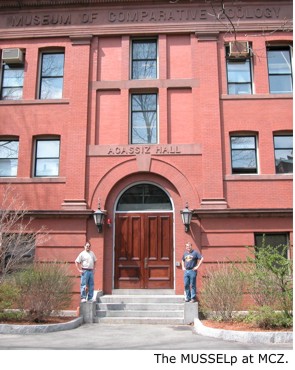 19-23 April 2004. — Collection Work at the MCZ: Lots and Lots of Digitial Pictures. DLG and KSC spent the week at Harvard's Museum of Comparative Zoology in Cambridge, Massachusetts. The MCZ's collection has hundreds of specimens from South America, Africa and the week that we spent in Cambridge in January 2003 was not enough to get through all of them. 19-23 April 2004. — Collection Work at the MCZ: Lots and Lots of Digitial Pictures. DLG and KSC spent the week at Harvard's Museum of Comparative Zoology in Cambridge, Massachusetts. The MCZ's collection has hundreds of specimens from South America, Africa and the week that we spent in Cambridge in January 2003 was not enough to get through all of them.
An objective of the MUSSEL Project is to accumulate an on-line database of Unionoida specimen records, focusing on the Etherioidea. The first step for us is to take a digital image of each lot, including the labels. The value of this system is that we can quickly capture a pictoral reference (roughly equivalent to 1000 words) which allows us to re-evaluate both the data and the indentification long after we have returned to our home institutions. These images will eventually be available on this web site, allowing malacologists all over the world to take advantage of the time and expense of our trips to various museums. For now, please take a look at a sample. |
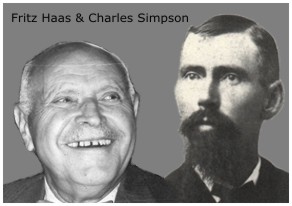 1 January 2004.— The Simpson-Haas Index has been upgraded and updated. One of the objectives of the MUSSELp is to produce a freely available database of freshwater mussel diversity. While that goal is in the process of being realized off-line, we have had a subset of the MUSSELp db available on-line since 2002: the Simpson-Haas Index (SHI). 1 January 2004.— The Simpson-Haas Index has been upgraded and updated. One of the objectives of the MUSSELp is to produce a freely available database of freshwater mussel diversity. While that goal is in the process of being realized off-line, we have had a subset of the MUSSELp db available on-line since 2002: the Simpson-Haas Index (SHI).
SHI is an exhaustive accounting of the nominal freshwater mussel species and subsequent combinations applied by Charles Simpson and Fritz Haas in their global treatments of the Unionoida at the species level.
So what is new? Until now the public version had been hosted from the Illinois Natural History Survey and powered using FileMaker— our thanks to Chris Mayer for making that work! Now SHI is hosted by the Academy of Natural Sciences; the back-end is now a MySQL database and the web interface is done in PHP. All this was facilitated by Paul Morris.
Moreover, as we are continually compiling and refining the MUSSELp db (which is the basis for the Simpson-Haas Index), the latest on-line edition has been improved as well.
Click here to search or browse the Simpson-Haas Index or just to learn more. |